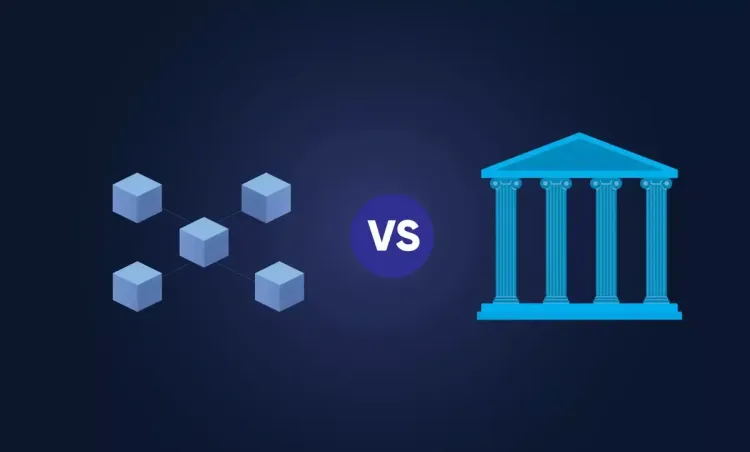Neobanks are one of the biggest changes in the banking industry. Neobanks, or digital banks, offer convenience, innovative features, and lower costs than traditional banks. Are they right for your savings? When choosing a neobank or traditional bank, consider reliability, accessibility, costs, and financial goals. Neobanks target technology-savvy users who seek efficiency, while traditional banks offer familiarity and an extensive network of branches. To make an informed financial decision, you need to understand the key differences between these two types of banks. This comparison will help you weigh the pros and cons of each option for saving, managing transactions, and using financial instruments. Let’s compare neobanks and traditional banks to see which is best for your savings.
What is a Neobank?
Neobanks are digital banks with no branches. They simplify banking through mobile apps and online platforms. These banks emphasise easy sign-up, budgeting tools, instant transfers, and real-time notifications. Neobanks offer accounts that are insured by the Federal Deposit Insurance Corporation (FDIC) by partnering with traditional banks that have received regulatory approval. The cost-effectiveness of nanobanks is a key consideration. Instead of maintaining their own branch infrastructure, they save on administrative costs and can therefore offer their customers lower fees and better interest rates. However, because they are exclusively digital, they may lack the personal touch and comprehensive services of traditional banks.
What Are Traditional Banks?
Traditional banks have dominated the financial industry for centuries. Their branches offer online banking, mobile banking and personal banking. Traditional banks offer savings, checking, credit, credit cards and investment services. Such banks are stable and reliable. Customers can go to branches for problem solving, financial advice or to carry out complex transactions. However, the convenience of traditional banks often comes at a price. They charge higher fees, have stricter account terms, and sometimes offer lower savings rates than Neobanks.
Convenience and Accessibility
Neobanks and traditional banks offer different accessibility options. New banks are very convenient because customers can do almost all their banking via their phone. Tech-savvy users appreciate the instant account setup, 24/7 chat support, and seamless integration with financial applications. However, traditional banks have physical locations. For customers who prefer personal service, branches offer security and personalised service. Traditional banks can also better serve the needs of people who are reluctant to use technology to manage their finances.
Fees and Efficiency
One of the biggest advantages of new banks is that they have low fees. Typically, there are no monthly maintenance fees, minimum balance fees, or overdraft fees. Many new banks offer free ATM withdrawals through major networks. For customers who want maximum savings, these cost savings can be significant. Traditional banks offer many services but charge higher fees. ATM fees, monthly account maintenance fees, and minimum balance penalties can all eat into your savings. However, some traditional banks offer premium accounts with additional benefits but require higher balances.
Savings Interest
New banks are offering higher interest rates on savings accounts. They offer customers attractive annual returns thanks to savings on operating costs. New banks offer a competitive advantage when it comes to growing savings. Basic savings accounts at traditional banks have a lower APR. Some traditional banks offer high-yield savings accounts, but these require larger deposits or stricter terms. Customers looking for a guaranteed return should consider the interest rate differential.
Customer Support and Reliability
Traditional banks offer better customer support with their branch-based service model. Customers can go to a branch to get help with an issue, open an account, or get financial advice. Complex financial issues can be resolved with on-site support. Neobanks make extensive use of chatbots and email support. They respond quickly, but customers who prefer personal attention may not like the lack of face-to-face interaction. The new banks are working to improve customer service to address these issues.
Technology and Innovation
New banks are innovating in technology. They are creating intuitive, seamless digital experiences. Tech-savvy users love neobanks because they offer automated budgeting tools, spending insights, and integrations with Apple Pay and Google Pay. Traditional banks, which are less tech-savvy, are catching up. Many offer mobile check deposits, real-time account monitoring, and person-to-person payments. Their technology may not be as advanced or user-friendly as that of neobanks.
Which Is Better for Your Savings?
Your financial goals and preferences will determine whether you use a neobank or a traditional bank. If you value higher interest rates, lower fees, and innovative digital tools, a Neobank may be a better choice for your savings. Traditional banks offer unmatched benefits in terms of stability, comprehensive services, and personal support. Hybrid approaches can also be considered. Many people use neobanks for day-to-day transactions and savings, and traditional banks for loans, mortgages, and safe deposit boxes. This allows you to benefit from both advantages.
Conclusion
The choice between Neobanks and traditional banks is not an easy one. Each has its own advantages and disadvantages for different needs. Neobanks are ideal for tech-savvy savers because of their cost-effectiveness, innovation, and convenience. Traditional banks provide unparalleled security, trust, and comprehensive services. Which method is best for your savings depends on your priorities: higher interest rates, lower fees, or personalised service. Understanding what each bank has to offer can help you make a financial decision that fits your needs. Whatever you choose, the most important thing is to be proactive about your finances and find ways to make them work to your advantage.




